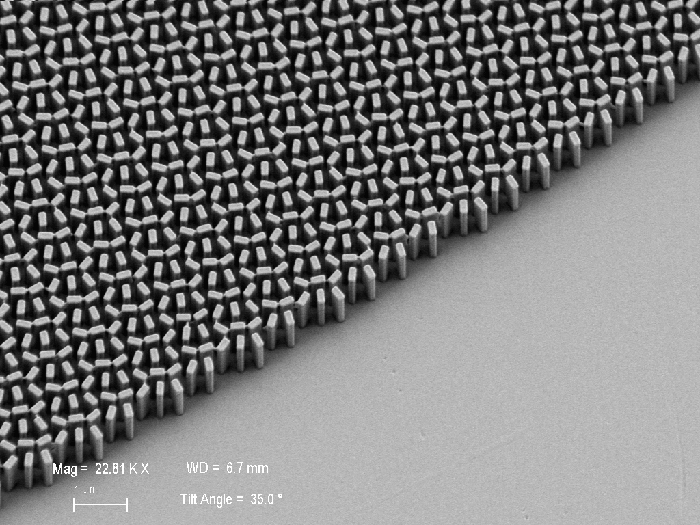Both virtual reality and augmented reality have been around more than a couple of years at this point, but the technology is largely still in its infancy. With a bulky headset required to experience the technology in the majority of cases, it feels like an older piece of equipment despite utilizing the latest advancements in technology to deliver a unique and entertaining experience. The bulky equipment required for virtual and augmented reality could change in the near future, however, with the advent of a new metalens technology.
Metalens Technology
A team at the Harvard John A Paulson School of Engineering and Applied Sciences (SEAS) has discovered a metalens technology that utilizes the entire spectrum of light to open up new avenues of advancement for both AR and VR.
A metalens focusing on the entire spectrum of light – including white light – was a challenge to develop, because each wavelength moves through the lens at different speeds. The differing speeds mean that the light will reach the lens at different points, which is a problem when trying to develop a metalens for AR and VR.
Traditional VR and AR devices use, “multiple curved lenses of different thicknesses and materials to correct these aberrations, which, of course, adds to the bulk of the device.”
The metalens takes a different approach, using an achromatic lens that can produce high quality, white light imaging. Federico Capasso, the Robert L. Wallace Professor of Applied Physics, and Vinton Hayes, Senior Research Fellow in Electrical Engineering at SEAS and senior author of the research, explain their new discovery.
“Metalenses have advantages over traditional lenses…Metalenses are thin, easy to fabricate and cost effective. This breakthrough extends those advantages across the whole visible range of light. This is the next big step.”
The paper published to Nature Nanotechnology has demonstrated the first single lens that can focus the entire spectrum of light in the same spot with a high resolution. Despite the relatively recent development of this metalens, researchers are already seeking commercial applications. It may not be too long until we see more virtual and augmented reality solutions that don’t rely on bulky equipment.
Revolutionary Implications
As mentioned above, current VR and AR technology is not currently in a place where it has enjoyed widespread adoption. Due to the expense and specialized equipment retired, it’s thus far largely remained a novelty rather than an integral part of our day to day lives. Virtual reality has largely been used for gaming, while augmented reality remains a cool way to enhance the environment around us. For both VR and AR, metalens technology may revolutionize the field.
While the implications of metalens technology for both VR and AR are immense, it’s particularly significant for virtual reality, as the equipment used currently is far bulkier than products such as the Google Glass. Being able to be immersed in an artificial world without a huge headset tying you down may lead to a world where virtual reality games become more mainstream rather than niche – largely due to metalens technology.
Whether this metalens discovery truly revolutionizes the field remains to be seen, but the research is definitely a positive advancement.












